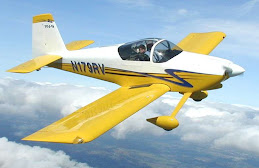Saturday 23rd August 2008. 5hr 30min
Completed tank attach platenuts on left spar. Set up for priming. Marked remaining parts "right"/"left". Cleaned ribs for left wing and aft spar parts. Etched and 1st coat primed all aft spar doublers.
My Mum & Dad came for a visit last night so I got a night off. Coming back with a fresh mind to those three platenuts on the aft face of the spar near the root, I eventually got them done without much additional drama. I was probably just tired on Wednesday by the time I got to that job.
So, back to priming. This is not a job I enjoy. I envy builders who just take out a rattle can and shoot, like it was something that barely needed mentioning. This Stewarts primer/sealer system requires two steps (cleaning and etching) before shooting anything. The shooting itself, like all spray painting, involves significant set-up and climbing into a sweaty overall and mask for the job itself. The last time I did it was in winter, so I set up a spray booth, which took up half the workshop and left the remainder very cramped. This time, I am hoping for good weather and I intend to do the spraying outside.
From my experience with the emp, I learned that the cleaner will take off sharpie markings so it is important to mark each part in a way that will still be seen after the primer goes on. As each part on the aft spar is unique, it is only necessary to distinguish between those for the left wing and those for the right. I decided to use a pattern of dots made with the centre punch for this. I chose to use ":.." for left and "..:" for right. This can still be confused depending on which way up you read them so I adopted the convention of always putting them on the aft face of the part , near the bottom.
I had not forgotten how tedious the job of preparing the parts is and it fully lived up to expectations. Cleaning the parts thoroughly with the Stewarts cleaning compound (diluted as per the instructions) and a piece of red Scotchbrite pad is a lot like washing the pots after dinner, which I am also not fond of. Never having been caught short of cash in a restaurant, I have never had to spend most of a day at the sink, but this was a good simulation.
After the scrubbing step, I rinsed off each part and left it to drain (dry if possible). Next it has to be painted with Ekoetch (diluted with an equal volume of water). This has to be left on for about three minutes before thoroughly rinsing the part and letting it dry. At that stage it is finally ready for the primer. Getting a process going to move all the parts through these steps certainly keeps you on your toes.
Subscribe to:
Post Comments (Atom)


No comments:
Post a Comment